Insect behaviour has been a rich source of inspiration for the field of robotics. Tiny insect-inspired robotic creatures could perform a great variety of tasks including surveillance, search-and-rescue missions and environmental monitoring, and even aircracft engine maintenance.
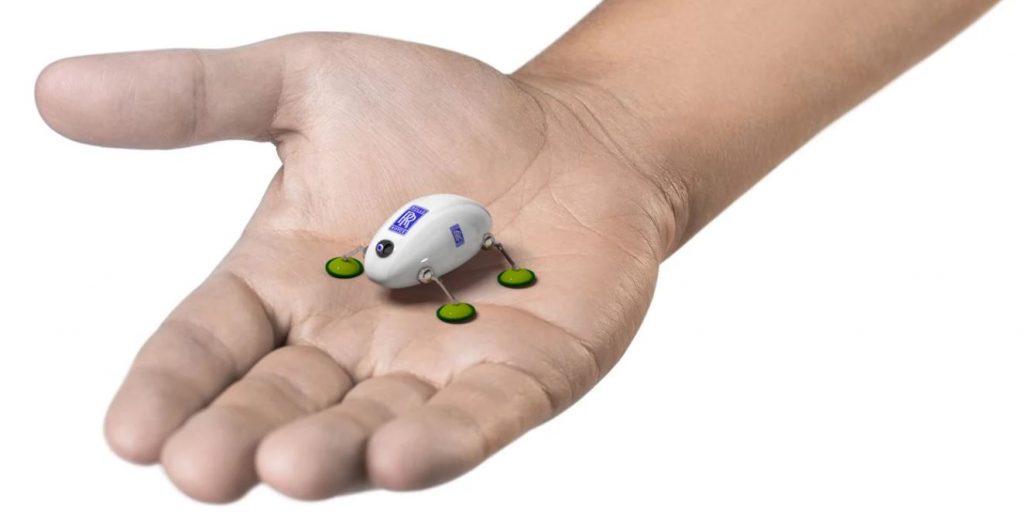
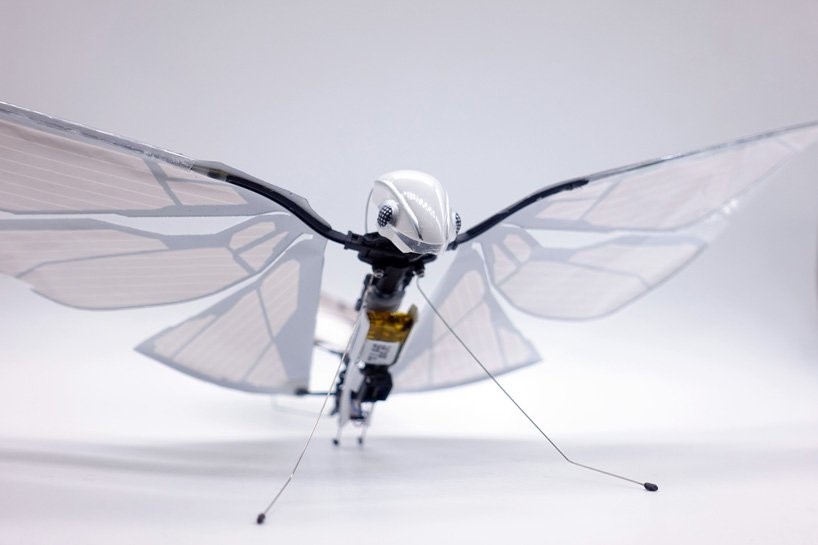
Metafly by Edwin Van Ruymbeke
French aeronautical engineer Edwin Van Ruymbeke has created Metafly, a unique biomimetic controllable creature that will make you forget about drones. This remote-control robot mimics the movement of a flying insect, emulating natural processes.
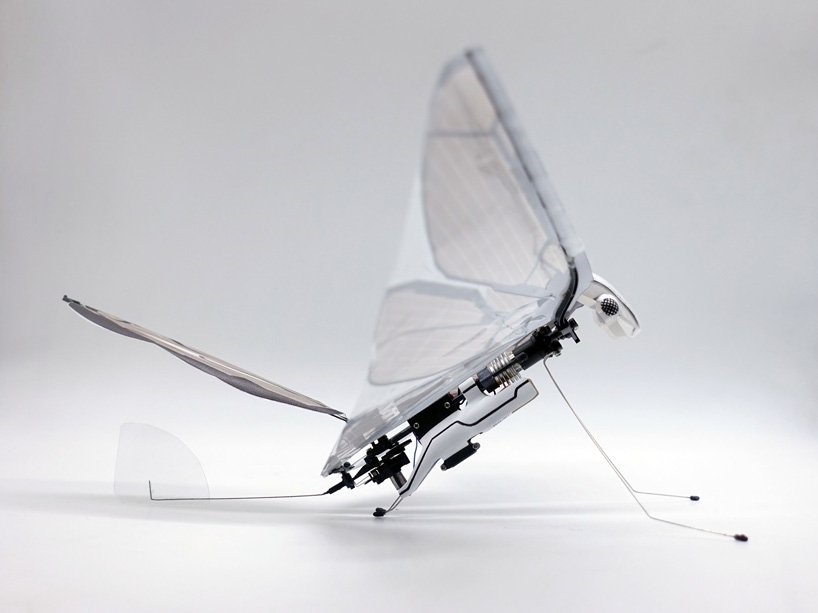
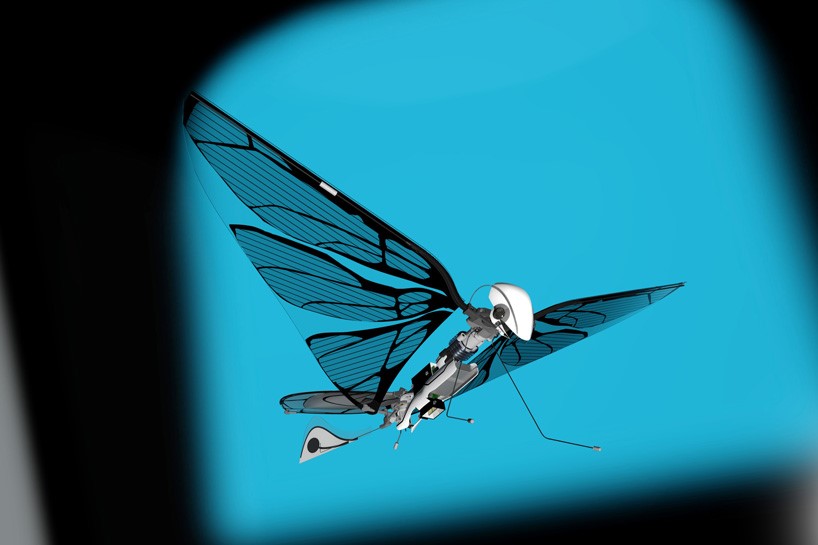
Metafly by Edwin Van Ruymbeke
The elastic wings are made of carbon fiber, liquid crystal polymer, and oriented polypropylene, which accounts for the robot’s crashproofness. The lightweight robot weighing less than 10 g can take turns, reach top speed of 18 kmh and manoeuvre even in the most compact spaces.

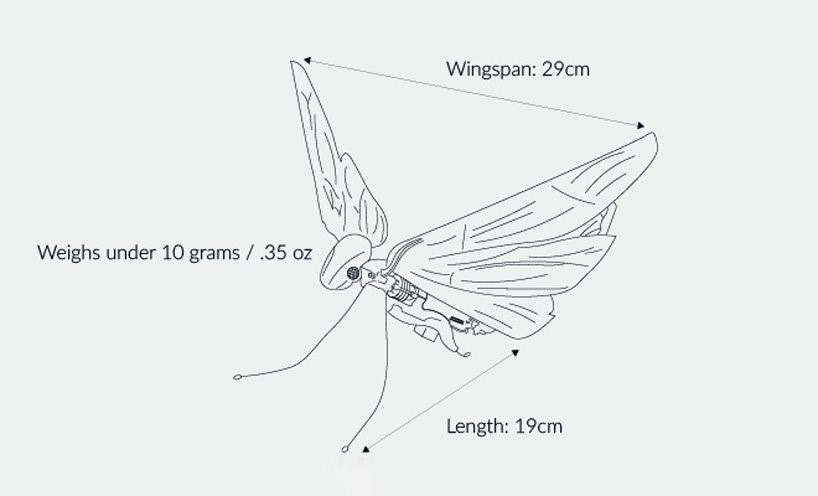

Metafly by Edwin Van Ruymbeke
Movement is handled by a mechanical coreless motor with an aluminum heat sink, powered by a hybrid lithium polymer battery. The Metafly can be charged either by placing it into a dock with the remote or using a separate powerbank which enables charging without the controller.
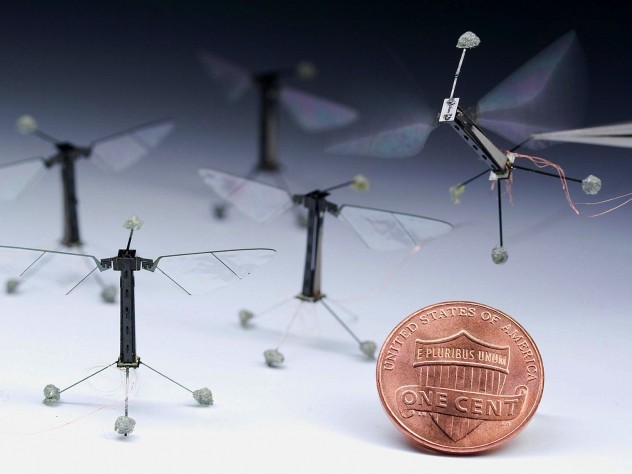
RoboBees by Wyss Institute at Harvard University (also header image)
While Van Ruymbeke is fascinated by the beauty of an insect flying, a team from Harvard’s Wyss Institute for Biologically Inspired Engineering has built an autonomous flying microrobot with potential uses in crop pollination, search and rescue missions, surveillance, as well as high-resolution weather, climate, and environmental monitoring.
Named RoboBees, the tiny robotic insects measure about half the size of a paper clip, weighs less that one-tenth of a gram, and flies for up to 20 seconds using “artificial muscles” compromised of piezoelectric materials that contract when a voltage is applied.

RoboBees by Wyss Institute at Harvard University
The movement of the insect-inspired robots are modelled on the biology of a real bee that flaps its wings around 120 times per second. Additional modifications allow some models of RoboBee to transition from swimming underwater to flying, as well as “perch” on surfaces using static electricity.

RoboBees by Wyss Institute at Harvard University
The tiny vehicles are conceived to be capable of self-contained flight and of achieving coordinated behavior in large groups. The tiny flying machine is fitted with “smart” sensors and control electronics that mimic the eyes and antennae of a bee, and can sense and respond dynamically to the environment.

RoboBees by Wyss Institute at Harvard University
Originally, the RoboBee was able to fly on its own utilizing a compact and seamlessly integrated power source. However, a recent demonstration shows the flying machine achieving self-powered flight with the help of six tiny solar cells, each weighing 10 mg, that have been strapped to the device.
The team is working robot to develop this manmade system further so it could perform myriad roles in agriculture or disaster relief acting as a self-directed drone in the future.
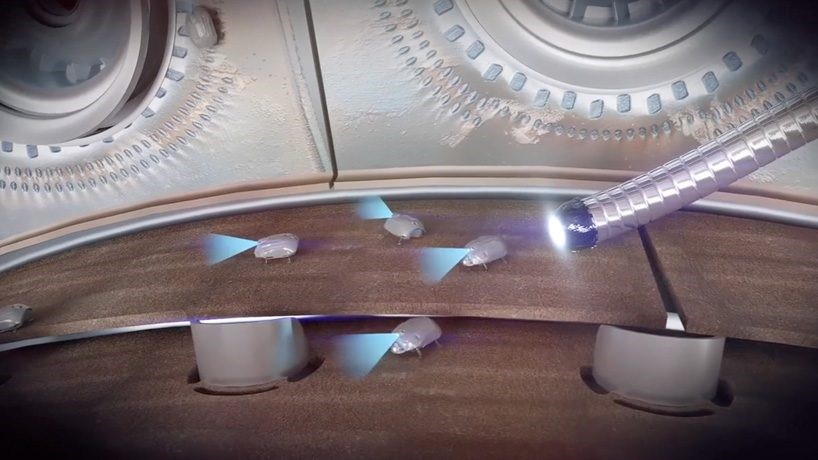
SWARM robot by Rolls-Royce (via)
As a part of their Intelligentengine project aiming to revolutionise the way engines are maintained and repaired, Rolls-Royce on-wing technology specialists have been working on development of a tiny robot cockroach, that can crawl inside airplane engines to fix them.

SWARM robot by Rolls-Royce (via)
Named SWAM robot, the tiny machine would be kitted with a camera and 3D scanner, which would allow engineers to remotely assess problems before tooling them with the necessary equipment to correct the problem.
The creatures would be delivered to the centre of the engine by a snake-like 10-mm-long robot that can travel through the engine environment like an endoscope, teaming up with others to patch up damaged thermal barrier coatings.